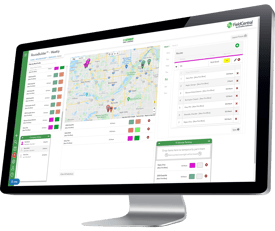 If you’ve ever bought a computer, you know how hard it can be determining which is best for you. From the screen size, to the processor, to the amount of RAM and memory, it seems like computer manufacturers go out of their way to confuse you with names like Celeron and Pentium. Did I mention that comparing Apple to a PC is also difficult? It’s, pardon the pun, like comparing an apple to an orange.
If you’ve ever bought a computer, you know how hard it can be determining which is best for you. From the screen size, to the processor, to the amount of RAM and memory, it seems like computer manufacturers go out of their way to confuse you with names like Celeron and Pentium. Did I mention that comparing Apple to a PC is also difficult? It’s, pardon the pun, like comparing an apple to an orange.
Buying service scheduling software can also be challenging because of a multitude of pricing options you’ll see on the market. Here’s an overview of those models, and what they mean to your business:
Pricing Models
1. Startup or Implementation Fee – These vary widely from a couple hundred to thousands of dollars. Typically, these fees pay for the initial setup and training of your software. If the fee is in the thousands of dollars, be sure to ask how long the implementation will take. If the vendor is charging you thousands of dollars, odds are it’s going to take a long time to get setup.
2. Flat Purchase Price – Some vendors charge a one-time, flat purchase price. This can be an expensive way to purchase field service software. Keep in mind that – because you’ve purchased the software – that these vendors don’t really have an incentive to deliver great support, and often don’t. They also don’t have an incentive to continually improve their software since they’ve already got thousands of dollars out of you.
3. Annual Maintenance Fees – You’ll typically find that software that you purchase outright has annual maintenance fees that provide you with any new updates. Often, these fees are pretty costly. So if you want any new features, it will cost you.
4. Support Fees – Again, with software that you purchase outright, you often have to pay for support – either annually, monthly or on a per-use basis. If you’ve bought buggy software, the per-use support pricing model can get costly.
5. Monthly License Fees – Typically, these require the least amount of money up-front and get you free support and upgrades throughout the life of your purchase. This pricing model tends to be popular among business owners because it gives them everything they need - - at a predictable price they can budget for each month. Be sure to ask what the licensing agreement looks like. Many companies will go month-to-month, meaning you can quit at any time. But some do lock you into year-long contracts that make it difficult to switch to new software if you’re dissatisfied before your year term is up.
Knowing is half the battle when it comes to making a big decision for your company. Be sure to ask the appropriate questions and know what you are signing up for before you sign on the dotted line.
Are you in the market for service scheduling software? Perhaps you just purchased one? What do you do now? Check out the 3 Things To Do Immediately After Purchasing Lawn Care Software and find out three crucial steps to take once you’ve found the right solution for you.






